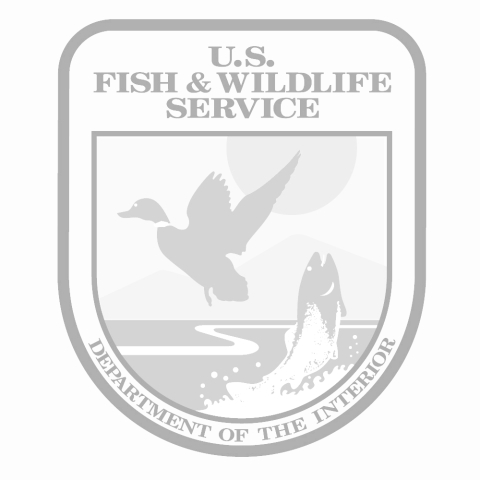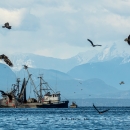

Project Description
PacifiCorp (doing business as Pacific Power/Rocky Mountain Power) (Applicant) is the developer and operator of the existing High Plains and McFadden Ridge I (also known as High Plains/McFadden Ridge) Wind Energy Project (Project) located in Carbon and Albany Counties, Wyoming. The Project consists of 85 wind turbines and associated infrastructure (roads, transmission lines, etc.) and has been operating since January 2009. The expected life of the project is at least 30 years. The Applicant submitted an Incidental Eagle Take Permit (IETP) (revised and final) application and Eagle Conservation Plan (ECP) to the U.S. Fish and Wildlife Service (Service) on January 16, 2020, requesting the maximum 30-year permit.
Potential Eagle Impacts
Monitoring conducted at the Project since 2009 has documented golden eagle mortalities. Take, including killing of eagles, is prohibited by the Eagle Act. However, the Service has been delegated the authority to issue eagle take permits, where the take is determined to be compatible with the preservation of eagles. The Service will issue permits for such take only after an applicant has committed to undertake all practical measures to avoid and minimize such take and mitigate anticipated take to the maximum extent achievable.
The Applicant has developed and provided an ECP that summarizes project design, construction and operational measures taken to avoid and minimize impacts to eagles, and results of pre- and post-construction monitoring efforts.
The Service has completed an EA for the potential issuance of the permit decision under the 2016 Eagle Act regulations. The EA assesses the potential effects of issuing an IETP and a No Action alternative (i.e., do not issue a permit) on the human and natural environment. The Service’s Collision Risk Model (CRM) predicts that up to 2.5 bald eagles and up to 2.8 golden eagles could be killed incidentally on an annual basis as a result of the operation of the Project. To estimate annual eagle fatalities for this Project, we did not have sufficient pre-construction eagle-use data to update exposure for the CRM; therefore, we used the national priors for the eagle exposure parameter.
Project Review
The Service has an independent statutory responsibility under the National Environmental Policy Act (NEPA) to evaluate its own actions related to the Project, namely the possible issuance of an IETP. A draft EA evaluating the impact of issuing (and not issuing) an IETP for the existing Project was made available for a 30-day comment period. It has been determined that there is no new significant information, and the Service has prepared a FONSI in accordance with NEPA regulations (40 C.F.R § 1508.13). The IETP will be issued under the 2016 Eagle Act regulations and will authorize non-purposeful take of bald eagle and golden eagles.
News and Updates
The U.S. Fish and Wildlife Service (Service) is releasing the final Environmental Assessment (EA), Finding of No Significant Impact (FONSI), and findings document for the issuance of an Incidental Eagle Take Permit (IETP) for the operation of High Plains and McFadden Ridge I (also known as High Plains/McFadden Ridge) Wind Energy Project (collectively “Project”) located in Carbon County, Wyoming. The 30-year permit authorizes the potential take of bald and golden eagles associated with the operation of the existing 85-turbine wind energy Project, and outlines required conservation and compensatory mitigation measures for minimizing and offsetting potential eagle take, pursuant to the 2016 regulations of the Bald and Golden Eagle Protection Act (Eagle Act). PacifiCorp DBA Pacific Power/Rocky Mountain Power (Applicant) is the developer and operator of the existing and operating Project.
| Attachment | Size |
|---|---|
| FONSI.pdf510.26 KB | 510.26 KB |
| Attachment 1- Final EA.pdf914.82 KB | 914.82 KB |
| HPMR_ECP.pdf5.73 MB | 5.73 MB |
| HPMR_Sec7_BioForm.pdf1.24 MB | 1.24 MB |
| HPMR_ECP_Appendix B_Pre-construction.pdf9.04 MB | 9.04 MB |
| HPMR_ECP_Appendix C_Post-construction.pdf2.51 MB | 2.51 MB |
| HPMR_ECP_Appendix D_Raptor Nest Studies.pdf8.91 MB | 8.91 MB |
| HPMR_ECP_Appendix E_Incident Report.pdf958.2 KB | 958.2 KB |



